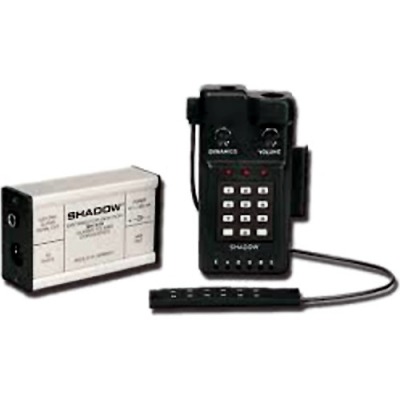Overview
Brand name:
Product:
- pickups
Dates of manufacture:
Designed by Andras Szalay in 1986-1987 the Shadow SH-075 is a quick mount guitar-to-midi convertor. The SH-075 comprises four parts: a six-pole, thin pickup which picks up all six strings separately, the converter, which is also the control unit, a small junction box with a MIDI output socket, and an external power supply which provides the low voltage to drive the system. The pickup attaches to the guitar as close to the bridge as possible, while the converter can normally be fixed via the strap peg on the end of the guitar body.
Using a pitchtracking system, the convertor unit processes the output from each section of the pickup, extracts the fundamental pitch from the harmonics and then converts the pitch to MIDI information. Although this happens very quickly there is a noticeable delay when playing the bottom two strings of the guitar.
The various numeric buttons plus the three LEDs on the converter unit allow the guitar to be tuned, and also enable the user to send MIDI program change messages (0-99) to external equipment. Both Poly and Mono MIDI modes can be selected, while MIDI pitch bend can be enabled or disabled. In Poly mode, the unit sends on MIDI channel 1 only while in Mono mode; the six strings are split over MIDI channels 1 to 6, with the first string being assigned to channel 1. The pitch bend range can be selected as either 8 semitones or 4 semitones. The MIDI output from the SH-075 can also be transposed up or down by up to three octaves. You can send the regular guitar signal down the multicore DIN lead which joins the convertor to the junction box.
Before using the SH-075, the individual string sensitivities have to be set up to suit the user's individual playing style, and this is done via the six screwdriver presets accessible through holes in the front of the unit. Two rotary knobs allow the user to control the velocity of the MIDI output (MIDI Volume) and the dynamics of the MIDI data.
Source: Recording Musician Magazine. October 1992.
Source: Encyclopedia of Hungarian rock. Volume two. By Alexandr Zhuk. 2017


